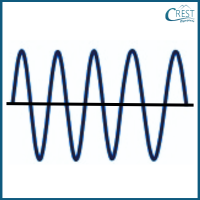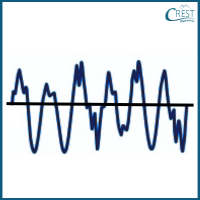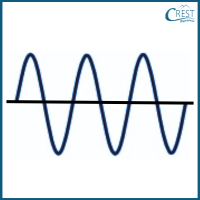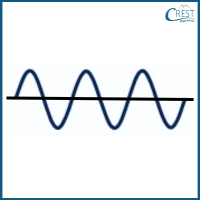1. Consider a scenario where you are standing in front of a large canyon and shout loudly. After a few seconds, you hear an echo of your shout. Select the statement that accurately describes the occurrence of an echo.
a) Sound is absorbed by the canyon walls, causing an echo.
b) Sound waves pass through the canyon, creating an echo effect.
c) Sound waves bounce off the canyon walls and reach your ears, creating an echo.
d) Sound waves are refracted by the canyon, resulting in an echo.
Answer: c) When you shout in front of a large canyon, the sound waves from your shout bounce off the canyon walls and travel back to you. This bouncing back of sound waves is called reflection, and it creates an echo. The smooth and solid surfaces of the canyon walls act like mirrors for sound, sending the sound waves back to your ears with a delay. This is why you hear a repeated and delayed version of your shout, known as an echo.
2. A student hears an echo 0.5 seconds after shouting. How far away is the reflecting surface that caused the echo? (Assume the speed of sound in air is 343 m/s).
a) 85.75 metres
b) 171.5 metres
c) 86.5 metres
d) 42.875 metres
Answer: a) Speed of sound in air (s) = 343 m/s
Time taken for the echo to return (t) = 0.5 seconds
Distance is calculated using the formula:
Distance = (Speed of Sound × Time)
When a sound wave travels to a reflecting surface and returns as an echo, the total distance it covers is twice the distance to the reflecting surface. This is because the sound wave goes from the source to the surface and then back to the source. So, when calculating the distance to the reflecting surface, we need to consider half of the total distance travelled by the sound wave.
Hence modifying the formula to calculate how far the reflecting surface is:
Distance = (Speed of Sound × Time)/2
Distance = (343 m/s × 0.5 s) / 2 = 85.75 metres
3. Which of the following sound waves, when produced, will result in a soft mellow sound?
a) 
b) 
c) 
d) 
Answer: d) The amplitude of a sound wave determines its loudness, with lower amplitudes producing softer sounds. Additionally, the frequency of a sound wave affects its pitch, with lower frequencies resulting in deeper tones. In this case, the low amplitude indicates a softer sound, and the low frequency contributes to a mellow quality. Therefore, the combination of low amplitude and low frequency in the given sound wave would result in a soft mellow sound.
4. The amplitude of a sound wave is 5 cm. If the amplitude is doubled, how would the loudness of the sound change, assuming all other factors remain constant?
a) It would become 2.5 times louder.
b) It would become 4 times louder.
c) It would become 10 times louder.
d) It would become 20 times louder.
Answer: b) The relationship between the amplitude of a sound wave and its perceived loudness is not linear, but rather logarithmic. When the amplitude of a sound wave is doubled, the perceived increase in loudness is approximately four times. This phenomenon is due to how our ears perceive changes in sound intensity.
5. In the following question, you will find an assertion and a reason. Select the appropriate option that applies.
Assertion: Soft surfaces absorb sound better than hard surfaces.
Reason: Soft surfaces cause sound waves to bounce off, reducing their intensity.
a) Both assertion and reason are true, and the reason is the correct explanation of the assertion.
b) Both assertion and reason are true, but the reason is not the correct explanation of the assertion.
c) Assertion is true, but the reason is false.
d) Assertion is false, but the reason is true.
Answer: c) Soft surfaces, such as fabrics, foams, and acoustic panels, have the ability to absorb sound waves due to their porous and fibrous nature. This absorption leads to a reduction in the reflection of sound and results in a quieter environment. Hard surfaces, on the other hand, tend to reflect sound waves, causing them to bounce off and potentially create echoes.





